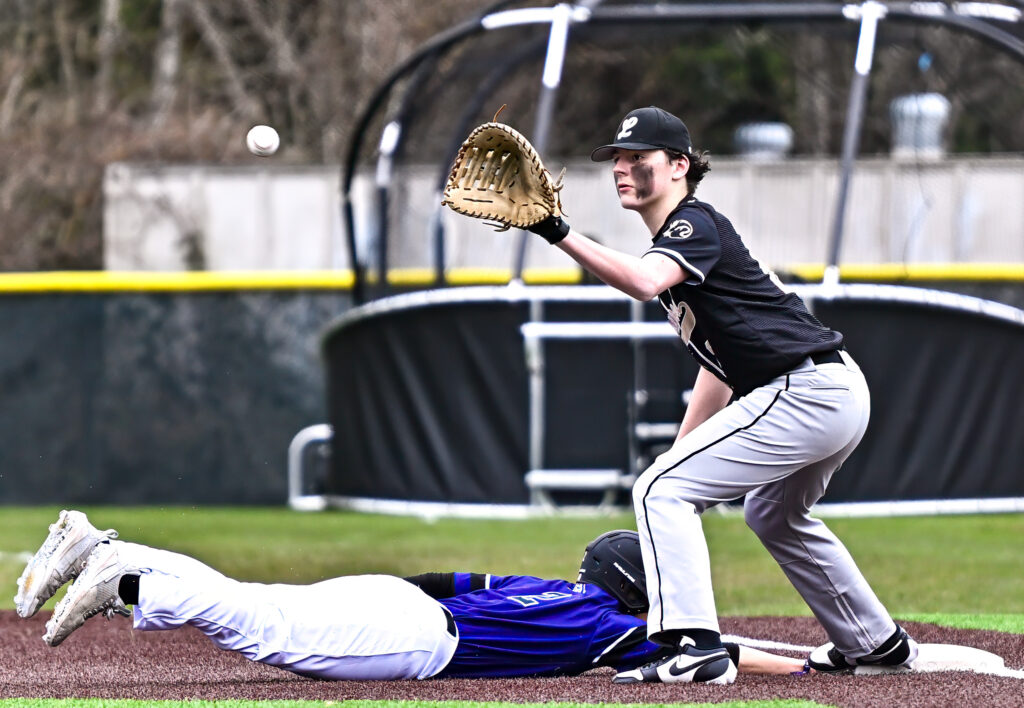Sports
Which NBA teams need to avoid the Play
With just six days left in the regular season, we are seeing a truly unprecedented race for playoff seeding in the Western Conference. Six teams — the Los Angeles Lakers, Denver Nuggets, LA Clippers, Golden State Warriors, Minnesota Timberwolves and Memphis Grizzlies — are battling over four automatic playoff spots. Advertisement Two games separate the […]



With just six days left in the regular season, we are seeing a truly unprecedented race for playoff seeding in the Western Conference. Six teams — the Los Angeles Lakers, Denver Nuggets, LA Clippers, Golden State Warriors, Minnesota Timberwolves and Memphis Grizzlies — are battling over four automatic playoff spots.
Advertisement
Two games separate the third-seeded Lakers (48-30) from the eighth-seeded Grizzlies (46-32), while just a half game separates the fourth-seeded Nuggets from Memphis in eighth. The Clippers, Warriors, Timberwolves and Grizzlies all have identical records with just four games remaining, so it’s set to be an action-packed week.
On the latest episode of “The Athletic NBA Daily”, Dave DuFour was joined by RealGM’s Wes Goldberg to discuss which teams seeded third through eighth in the West need to avoid the Play-In Tournament the most, and whether the Grizzlies could potentially be knocked out of playoff contention altogether if they dropped into the Play-In.
Watch the full episode of “NBA Daily” below or on the YouTube channel, or via the “NBA Daily” podcast feed on Apple Podcasts and Spotify.
(Top Photo: Jordan Johnson / NBAE via Getty Images)
Sports
ELF agrees multi-year partnership with SportWorld
The European League of Football (ELF) has signed a long-term partnership with SportWorld, a global streaming platform for live sports. Beginning with the 2025 season opener on May 17, all 101 live ELF games will be available to watch through pay-per-view (PPV) on the SportWorld app. Fans can book and stream each game individually on […]
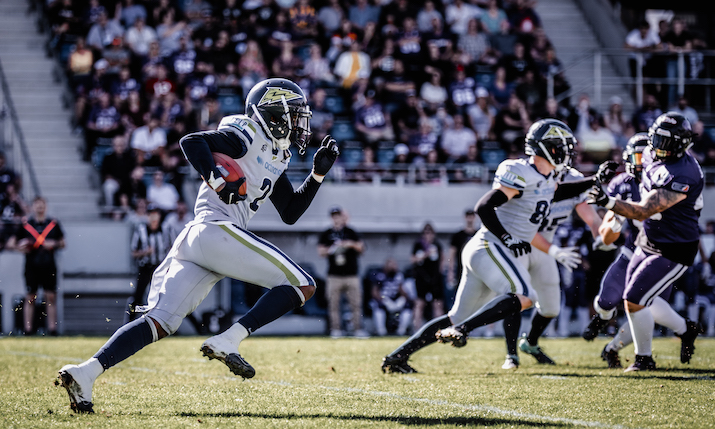

The European League of Football (ELF) has signed a long-term partnership with SportWorld, a global streaming platform for live sports.
Beginning with the 2025 season opener on May 17, all 101 live ELF games will be available to watch through pay-per-view (PPV) on the SportWorld app. Fans can book and stream each game individually on their Smart TV or smartphone (iOS and Android).
SportWorld is already a major player in sports streaming, with over 12 million app downloads and users in 205 countries.
“With SportWorld, we gain an innovative partner who takes digital sports streaming to the next level,” said Zeljko Karajica, CEO of ELF investment partner SEH Sports & Entertainment Holding. “Our goal is to grow European football across all platforms, making it easy to access and exciting to watch. Being able to stream ELF games via pay-per-view directly on Smart TVs worldwide is a big step forward.”
This deal is not just about streaming games. B1 SmartTV, which operates SportWorld, will also become global licence holder for ELF teams and players. That means fans will be able to experience more exclusive content in special ’zones’ dedicated to each team within the SportWorld app.
“Adding the ELF to our platform is a great win for SportWorld,” said Robert Niemann, CEO at SportWorld. “We are expanding our global live sports offer and giving football fans a great way to follow their sport on all devices – whenever and wherever they want. The ELF has energy, a strong community, and exciting content. It’s a perfect match for us.”
The partnership between ELF and SportWorld is signed for an initial period of three years, covering the 2025 to 2027 seasons. The agreement includes all international markets, showing the strong global focus of the European League of Football.
Sports
Track and Field Hosts Last Chance Meet on Thursday
AMHERST, Mass. – The University of Massachusetts men’s and women’s track & field programs are set to compete in the Last Chance Meet on Thursday, May 15 at the UMass Track & Field Complex in Amherst, Mass. This is the final event for Massachusetts ahead of the NCAA Regional Qualifiers. A full schedule of events can be […]
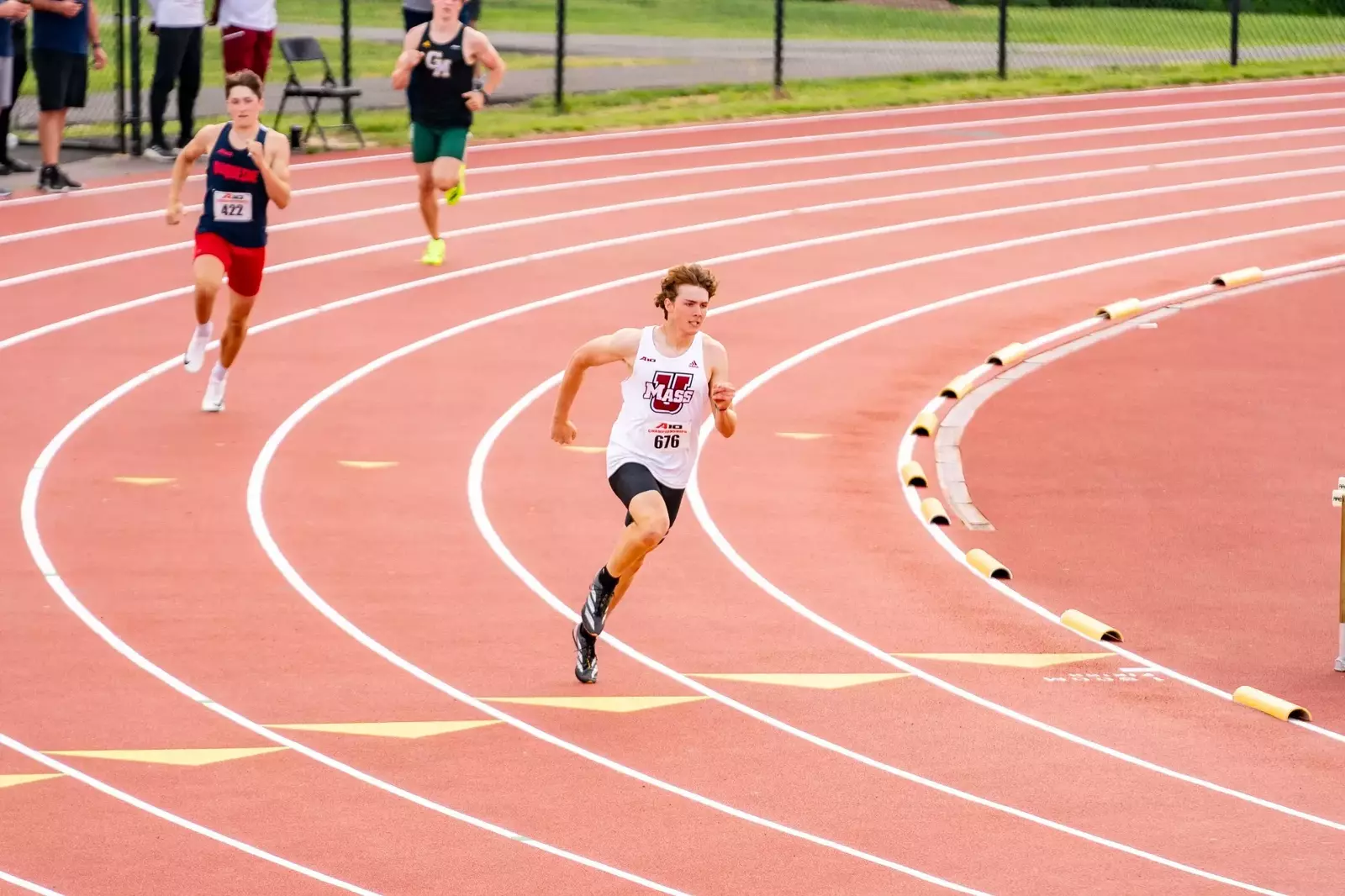
A full schedule of events can be found here.
Expected lists of participants are attached below:
Women’s performance list
Men’s performance list
Sports
Bill narrowed to define male and female for sports access, advanced after cloture vote
A measure that would define male and female in state law was narrowed to apply only to access to interscholastic sports before being advanced to the final round of consideration May 14.

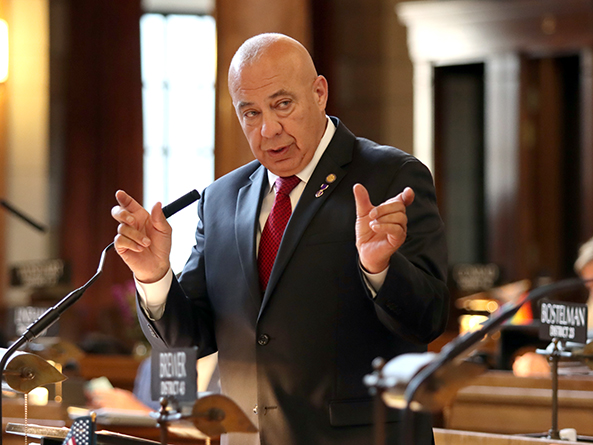
A measure that would define male and female in state law was narrowed to apply only to access to interscholastic sports before being advanced to the final round of consideration May 14.
 100vw, 200px”><figcaption id=) Sen. Kathleen Kauth
Sen. Kathleen KauthLB89, as introduced by Omaha Sen. Kathleen Kauth at the request of Gov. Jim Pillen, would restrict participation in school sports to teams that correspond to a student’s “biological sex” — defined for males as a person whose “biological reproductive system is organized around the production of sperm,” and for females as being organized around the production of ova.
The measure, known as the Stand with Women Act, was amended during the first round of debate to alter those definitions and base them on reproductive systems that would do so “but for a congenital anomaly or intentional or unintentional disruption.”
Students would be required to provide confirmation of their sex through a document signed by a doctor or under the authority of a doctor in order to participate in a sport that is designated for a single sex. Female students could participate in sports designated for males if no female-only alternative exists and coed sports still would be allowed.
Lawmakers narrowed the measure on general file to apply to private schools only if the school’s students or teams compete against a public school in an interscholastic or intramural sport or the school is a member of an athletic association.
The bill as introduced also would require that all public and private schools in Nebraska, both K-12 and postsecondary, designate bathrooms and locker rooms based on the bill’s definitions of male and female.
Kauth said the bill represents “commonsense adherence to biology” and is needed to ensure that women and girls are not unfairly disadvantaged by competing against transgender athletes for medals and records.
“Eighty percent of the entire country believes that we should not have males participating in female athletics, and they should stay out of their locker rooms and bathrooms,” she said. “The fact that we have to legislate this still astounds me.”
Ralston Sen. Merv Riepe offered an amendment during select file debate, adopted 34-8, that would further narrow the proposal by removing all provisions in the bill related to bathroom and locker room designations and signage based on the measure’s definitions of male and female.
The amendment also would remove provisions in the bill as amended on general file requiring all state agencies to define an individual’s sex as either male or female in the adoption and promulgation of rules and regulations, enforcement of administrative decisions and dispute adjudication.
Finally, the amendment would remove any reference to intramural sports.
Riepe said his proposal would focus the bill on fairness in athletic competition. Local school districts already are handling bathroom and locker room access on a case-by-case basis, he said, and “micromanaging” those decisions is not necessary.
“They don’t need a one-size-fits-all [mandate] from Lincoln,” Riepe said. “These are deeply personal and often sensitive situations and they deserve better than to be turned into a political litmus test.”
Kauth said she would have preferred to keep the provisions relating to bathrooms and locker rooms in the bill, but that a compromise was necessary for the measure to move forward.
“I respect his decision and we’ve made that modification,” Kauth said, “And I think a lot of times on this floor, we find out that sometimes making incremental steps is the best way to go.”
David City Sen. Jared Storm supported the proposal, calling it a matter of safety. He said his daughters have expressed fear of having to compete against “biological boys,” who he said would have unfair physical advantages even if they were undergoing hormone replacement therapy.
“God created men and women equal in dignity, but different,” Storm said.
Sen. Mike Jacobson of North Platte also spoke in favor, calling LB89 “the minimum that our citizenry would expect from us” to ensure a level playing field in sports.
“If we took a vote across the state, overwhelmingly, Nebraskans believe that that’s the right thing to do,” Jacobson said.
Lincoln Sen. George Dungan opposed the measure. He cautioned fellow lawmakers that while discrimination may not be the intent of the proposal, it would be the impact.
This bill would “completely upend” the lives of families of trans students who wish to participate in youth sports but are not out at school, he said, without a compelling state interest for doing so. Ensuring that a particular athlete holds a school record or wins a medal is not reason enough to “ostracize” trans youth, he said.
“Women’s sports are thriving in the state of Nebraska and LB89 does nothing to protect the entirety of women’s sports,” Dungan said.
Sen. Megan Hunt of Omaha also opposed the bill. She said the push for such legislation is coming from lawmakers, not students.
“Most kids want fairness [and] inclusion,” Hunt said. “They want the freedom to play with their friends without being political. It’s adults in this room and in legislatures around the country who are forcing division in spaces where it never existed before.”
After two hours of debate, Kauth offered a motion to invoke cloture, which ceases debate and forces a vote on the bill. The motion succeeded on a vote of 33-14 and lawmakers advanced LB89 to final reading 33-15.
![]()

Sports
Women’s Track 23rd After Day One of AARTFC Championships
Story Links WILLIAMSTOWN, Mass. – The Union College women’s outdoor track & field team earned one point to sit in a tie for 23rd place after day one of the 2025 All-Atlantic Region Track & Field Conference Outdoor Championships, held on Wednesday afternoon at Williams College’s Weston Athletic Complex. The Garnet […]
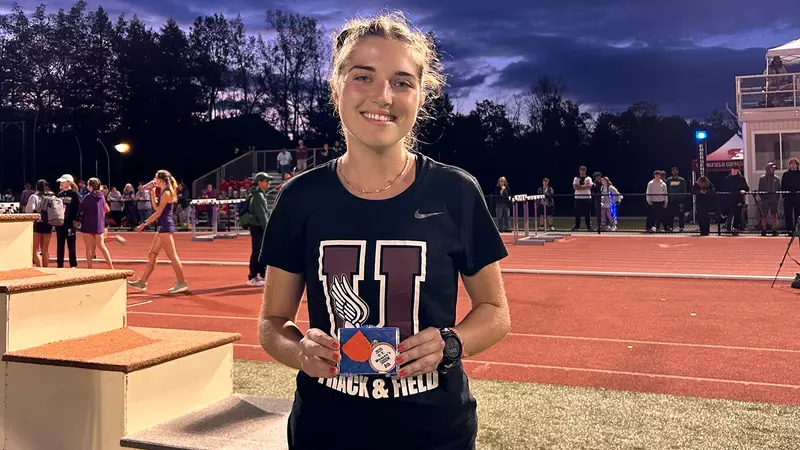
WILLIAMSTOWN, Mass. – The Union College women’s outdoor track & field team earned one point to sit in a tie for 23rd place after day one of the 2025 All-Atlantic Region Track & Field Conference Outdoor Championships, held on Wednesday afternoon at Williams College’s Weston Athletic Complex.
The Garnet Chargers got on the board with one point on the first day of competition, with only eight of the 22 events completed. All three of the team’s entries finished better than their seeding, with two season bests and one personal best among the three results.
Sophomore Annabel Dobash earned the team’s first podium finish of the event in the 5,000 meters, taking more than 24 seconds off her personal best with a time of 17:56.80 that earned her an eighth-place finish. The mark, the second-fastest 5K in program history, earned one point for Union and improved on her 12th seed entering the day.
First-year Lauryn Johnson started out the day for the Garnet Chargers in the javelin throw, where she far outpaced her seeding (29th) with a 15th-place finish out of 30 competitors after a top toss of 33.83 meters on her first attempt.
Union also took 10th in the 4×400-meter relay, with the all-class quartet of senior Gabby Baker, junior Grace Ardito, sophomore Kat Doran and first-year Kyleigh Record finishing the four laps in 4:00.50.
The Garnet Chargers will be back in action at the AARTFC Championships tomorrow, with five Union entries looking to find their way to the podium.
Sports
Is the future of college track & field, including Oregon Ducks, in jeopardy of collapse?
There will be an ill wind blowing Friday when the Big Ten Outdoor Track and Field Championships convene at the University of Oregon’s Hayward Field, and not that pesky, back straight headwind. College track and field is in real trouble. Attempting to more fairly compensate football and men’s basketball players financially, the NCAA is on […]
There will be an ill wind blowing Friday when the Big Ten Outdoor Track and Field Championships convene at the University of Oregon’s Hayward Field, and not that pesky, back straight headwind.
College track and field is in real trouble.
Attempting to more fairly compensate football and men’s basketball players financially, the NCAA is on the verge of major, structural changes to intercollegiate athletics. The upshot?
College track, a revenue loser everywhere, even in Track Town USA, is beginning to look like so much collateral damage.
Virginia track coach Vin Lananna, the former Oregon coach and past president of Eugene’s TrackTown USA organizing committee, is sounding the alarm.
“I hope I’m wrong,” Lananna says. “I’d love to be dead wrong on this. But I see no evidence that dissuades me from believing our sport is under siege.”
Lananna and others say that unless college track becomes something the public can easily watch and understand, it risks descending into a tiny niche, contested by only a handful of schools. Men’s gymnastics or fencing, for instance. Time is short.
“If we don’t act now,” Lananna says, “we’ll never save it.”
Slashing track scholarships
The exact parameters of the NCAA changes still are being hammered out in the California courtroom of U.S. District Judge Claudia Wilken. The NCAA and Division I power conferences agreed last year to an anti-trust settlement that would pay past and current athletes nearly $2.8 billion.
As part of the deal, scholarship limits were increased but roster sizes capped. As a result, some athletes lost or are poised to lose roster spots they either had or were promised before the deal was made. How to fairly address their concerns is being argued this week in Wilken’s courtroom.
If Wilken doesn’t accept the settlement, it could be scrapped altogether. And since the new rules are supposed to go into effect on July 1, there is widespread uncertainty about what’s next.
“Clear as mud,” says Sam Seemes, chief executive of the U.S. Track and Field and Cross Country Coaches Association. “I’m not sure mud isn’t clearer.”
Even if specifics of the settlement change to some degree, much of it is expected to stand. What is crystal clear is no matter what the rules are going forward, the landscape for college track is about to change for these reasons.
- College athletes, most from revenue producing sports are set to be paid directly by the schools, which each would be allowed more than $20 million per year for that purpose under terms of the settlement. That money must come from somewhere.
- The roster cap for football was set at 105. Every one of those players will be eligible for scholarships. Up through this year only 85 FBS players could be on scholarship, leaving schools to fill out larger squad sizes with walk-ons.
- College track scholarship limits were bumped to 45 for both men and women, up from 18 for women and 12.6 for men. Through this season, many Division I track teams have had more than 45 athletes on their rosters because they divided scholarships and used walk-ons. The University of Oregon currently lists rosters of 54 men and 54 women.
As the settlement is structured, the Ducks would have smaller rosters and could offer more scholarships. But no school would be required to give that many track scholarships, and few are likely to spend heavily on track. Believing any school would offer 45 track scholarships is pure fantasy.
“I don’t know of any Division I institution that is going to do that,” Seemes says.
In fact, many schools are expected to slash track scholarships to help other sports. Football, for instance. But that scholarship money also could go to non-revenue sports that connect better with the public. Under terms of the settlement, the baseball scholarship limit would go from 11.7 to 34.
“I know of one institution that has reduced men’s scholarships from track to 12.6 to six, and given the other six to baseball,” Seemes says. “That institution obviously wants to be more invested in baseball than men’s track and field.”

Former Oregon track & field coach Vin Lananna says that college track & field competitions “are dreadful. They’re long, drawn out, fragmented, and the modern audience can’t relate to whatever it is we’re doing.” LC- The Oregonian
‘Bored to death’
College track and field once was a major spectator sport. Meets at Hayward Field were events. In 1970, Steve Prefontaine’s freshman year at Oregon, he competed in Pac-8 dual meets against Washington, Cal, UCLA, Washington State and Oregon State. Eugene Register-Guard printed pre-meet form charts that fans brought with them as they filled the stadium.
Dual meets engaged people who knew little about the intricacies of the sport, and were more interested in who won than how many runners cracked 13 minutes, 50 seconds in the 5,000 meters. People inside Hayward in May 1972 still talk about the 1,500-meter battle between Prefontaine and Oregon State Olympian Hailu Ebba in the Oregon-OSU dual.
The winning time? Who knows? Who cares? The story was about what would prevail, Pre’s strength or Ebba’s speed. Pre won as a packed stadium roared.
Flash forward 50 years, all of that is gone. Dual meets have been largely pitched into history’s scrap heap. Star athletes going head-to-head in the 5,000 with the outcome of the meet hanging in the balance have been replaced by daylong invitational meets with no team scoring.
Regular season college meets take place before mostly empty seats, even at the beautiful, 12,500-seat Hayward Field.
“Track and field has moved away from being any kind of team sport whatsoever,” Lananna says. “Our competitions are dreadful. They’re long, drawn out, fragmented, and the modern audience can’t relate to whatever it is we’re doing.”
On any given spring weekend, a college track team might send its throwers to a throws-specific meet in one city, its distance runners to a distance carnival in another city, and its sprinters and hurdlers somewhere else.
The regular season goal has become to find places where college athletes can record times or marks that qualify them for postseason competition. Winning an event isn’t as important as a fast time or a long triple jump or throw. Spectators aren’t part of the equation.
Seemes, CEO of the USTFCCCA, says he recently attended an all-day meet that was unscored. There were a few, strong performances interspersed in what was a mind-numbing blizzard of heats.
“I’m a huge track fan,” he says. “And I’m going to tell you, I was bored to death. It might have been great for the coach and the student/athlete who had a great performance. That’s not enough.”
There can’t be a general interest sports fan in the world willing to sit through the Stanford Invitational. This year’s schedule shows the invitational’s first day’s first event began at 9 a.m. and the last event went off at 10:55 p.m. There were eight sections of the 5,000 and five of the 10,000, which translates into more than four and a half hours of athletes around in circles.
Fans have migrated elsewhere. College baseball and softball have surged in popularity, and it’s not surprising. Their games feature schools competing head-to-head, in TV-friendly time spans. There is a clear winning team.
Volleyball, which changed its scoring rules to speed up play, is attracting ever more fans. Nebraska put more than 92,000 people in the football stadium in 2023 to watch a women’s volleyball match with Omaha.
So, when budget-strapped athletic administrators take a knife to non-revenue sports to pay for more football scholarships, will they first go after volleyball, baseball, softball or … track? Most, probably, will opt to protect sports people actually want to watch.
Women’s track has long been a hedge against a university with gender equity issues. Those 18 scholarships for female athletes have come in handy.
But there are emerging sports, such as beach volleyball, that can do the same thing and still appeal to fans in ways track does not. Women’s gymnastics has become a popular spectator sport at some schools.
“The sport that scares me right now is women’s flag football,” Seemes says. “It can involve a lot of numbers and really balance athletic departments for Title IX. The NFL is heavy behind it, and God knows, the NFL is a money machine. In collegiate athletics, money talks.”
Some solutions
College track coaches are beginning to see the peril. Oregon brought back its team invitational this spring after a hiatus of several seasons.
“I’m a big believer in the team concept of track and field,” UO coach Jerry Schumacher says. “I’d love to see more team competitions going forward. At the university level, I think the name across the front is more important than the one on the back.”
There are several ways college coaches can begin making college track more spectator friendly. They can schedule more scored team competitions in tight, TV-compatible time windows. They can cut travel costs by filling their regular season schedules with meets against neighboring schools.
They can toss out performance lists and determine fields for the NCAA Championships with teams going head-to-head in regional meets the way women’s gymnastics does, perhaps carving out spots for individuals who star on teams that don’t make the cut. They can do an end run around roster limits by creating JV teams.
It would be different, but perhaps a better option than waiting for a solution from interested parties such as former Alabama football coach Nick Saban, who has been outspoken about changes he wants to see in college athletics.
Former college distance runner Victoria Jackson is a sports historian and clinical associate professor of history at Arizona State. She says many of the issues facing track and field and other non-revenue sports stem from being subject to rules and rule changes designed for revenue sports.
Rather than trying to adapt to changes made for football, Jackson says it’s past time for college track to set its own agenda.
“We have to be big and bold, and figure out our own solutions,” Jackson says. “Because, you know what? Nick Saban does not care about track and field. He can claim to, but he doesn’t. He doesn’t understand the sport, and he’s one of the people who is dictating the future of it.”
Whatever happens in Judge Wilken’s courtroom, it’s clear college track and field must re-engage with fans outside its small base to matter in the increasingly crowded sports landscape.
Seemes says the sport needs to think of itself as a business and make itself attractive in the marketplace. And soon.
“Doing what we do now, we wouldn’t be in business,” he says. “We would be broke. We would be out of business. We would not have a sport.”
— Ken Goe for The Oregonian
KenGoe1020@gmail.com
Sports
England’s squads for NEVZA Youth Beach Championships 2025 announced
England’s U18 and U20 squads can be confirmed for the NEVZA Youth Beach Championships 2025 from Tuesday 1st July to Thursday 3rd July. The event will be staged on Belvedere (South) Beach in Bridlington, Yorkshire. England will enter a total of four teams in each of the male and female U18 competitions and five teams […]
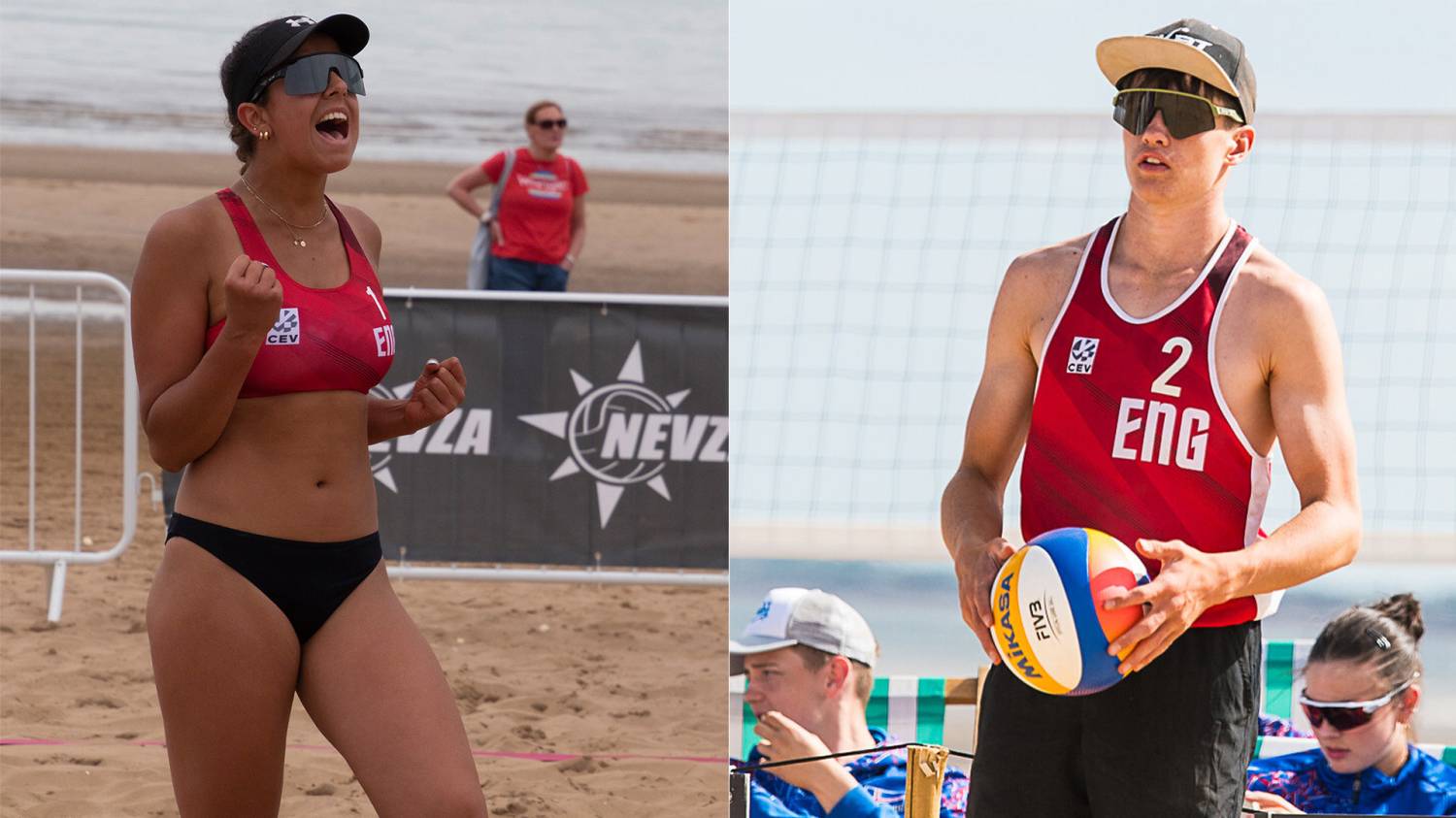
The event will be staged on Belvedere (South) Beach in Bridlington, Yorkshire.
England will enter a total of four teams in each of the male and female U18 competitions and five teams in each of the male and female U20 competitions. Exact pairings will be confirmed at a later date.

Other nations who will compete include Denmark, Finland, Iceland, Norway and Sweden.
The Youth event will be preceded by the Senior competition, which will run first, from Friday 27th June until Sunday 29th June.
Spectators are welcome at both events, with no charge for admission, while matches will also be streamed live on Volleyball England’s YouTube Channel.
England squads
U18 Girls
Robyn Clifford, Tilly Hutton, Elisa Jarmon, Cheryl Manfredini da Cruz, Krystina Ngatcha, Molly Quinn, Jennifer Rates, Lauren Thorn.
U20 Girls
Shannon Baxter, Heidi Bright, Charlie Chambers, Sophia Chedgy, Maia Darling, Natasha Frost, Alice Jagielska, Daniella Tchandeu, Katie Tuohey, Lilla Whittaker.
U18 Boys
Lewis Bunton, Josh Cosgrove, Ollie Harrison, Rease Jarmon, Maks Makowski, Emmanuel Oretoye, Luca Robinson, Ryan Wartnaby.
U20 Boys
Otto Alvarez, Maxime Carolan, Billy Henning, James Ingham, Tomo Iwata-Furlonger, Zak Maghur, Dylan Parsons, Stuart Perry, Theo Plaza, Lucas Rijvers.
-

 Fashion3 weeks ago
Fashion3 weeks agoThis is poetry in motion.
-
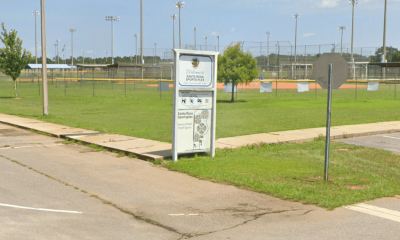
 Rec Sports3 weeks ago
Rec Sports3 weeks agoDeputies investigating incident that caused panic at Pace youth sports complex
-

 NIL3 weeks ago
NIL3 weeks agoSave Like a Pro: NIL money isn’t free cash—taxes take a bite! Set aside part of …
-

 College Sports2 weeks ago
College Sports2 weeks agoDuke basketball's Isaiah Evans on 2025 NBA Draft early entry list
-

 Fashion3 weeks ago
Fashion3 weeks agohas always dreamed in Mercurial. Now his initials are on the boots. The new Kyl…
-

 Fashion2 weeks ago
Fashion2 weeks agoHow to watch Avalanche vs. Stars Game 7 FREE stream today
-

 High School Sports6 days ago
High School Sports6 days agoWeb exclusive
-

 Sports6 days ago
Sports6 days agoPrinceton University
-

 Sports6 days ago
Sports6 days ago2025 NCAA softball bracket: Women’s College World Series scores, schedule
-

 Motorsports1 week ago
Motorsports1 week agoBowman Gray is the site of NASCAR’S “Advance Auto Parts Night at the Races” this Saturday















































